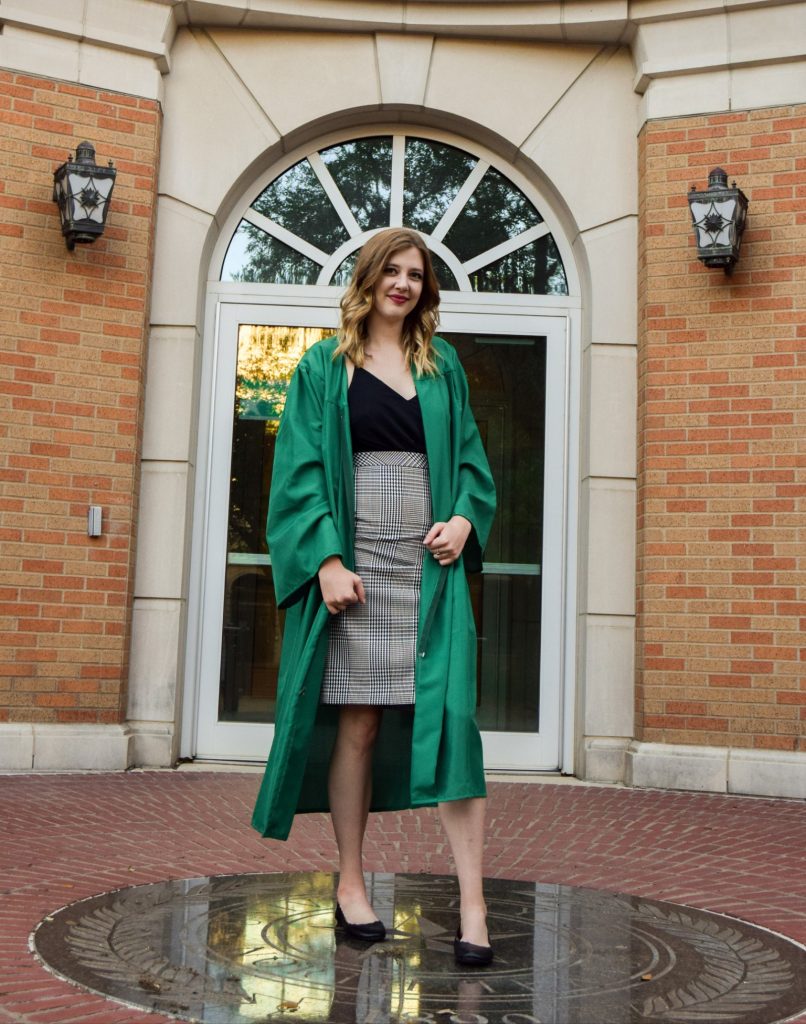By: Allison Taylor
I grew up in a small town in Texas, where everyone knew everything about everyone. Looking back on my childhood, I’m surprised at how well my mom kept our legacy of CMT hidden. With five generations of CMT in my family, I want to break that chain once and for all. As a recent college graduate pursuing a Ph.D. in neuroscience, I’m determined to give it my best shot. Who better to lead a new wave of research than someone with CMT who cares deeply and has a personal connection to the work?
Graduation Goals Driven by Genetics
My mother was the band director for our local middle and high schools and a leader in the community. To this day, almost no one knows about her daily struggles of living with CMT. She has always kept her pain hidden, even to my two sisters and me. I think she never wanted the world to treat us differently because of CMT.
From an early age, my mother could see that my sisters and I were showing symptoms of CMT. She would ask us to remove our socks and shoes to look at the structure of our feet. She would say, “Oh yes, you definitely have ‘the disease.'” She always referred to CMT as “the disease,” partly because Charcot-Marie-Tooth disease is a mouthful to say, but also because we always knew what she meant. CMT can be traced back in my family with at least one case every generation. Family lore states that my great-great-grandmother exhibited symptoms before CMT became a diagnosable disease in 1898!
READ NEXT: Because Six Generations are Too Many
I have CMT1X which is an X-linked dominant disease, meaning that males are affected more severely than females. But its dominant nature means that females are still affected. My CMT impacts my feet the most, and I’m always at war with shoes. As a 22-year-old who wants to dress like a normal person, I’m frustrated by being unable to wear anything other than tennis shoes. It’s a constant struggle of figuring out how to make sure business attire and dresses or skirts can be worn with athletic shoes and then explaining why I’m underdressed for everything.
But much more than my battles with shoes, I am affected by the pain. Instead of talking about the pain, I often talk about my shoe troubles because shoes are easier for people to relate to. The pain I feel is so personal and unique that I have trouble talking about it. Other people just wouldn’t get it. That pain is one of the harsh realities that has fueled my future goals.
A Chance to Rewrite History
I recently graduated from the University of North Texas with a Bachelor of Biology.
I had an aptitude for the sciences growing up, and that interest has flourished into a passion. My undergraduate honors thesis was about the Schwann cells of the peripheral nervous system and how they malfunction in CMT1X. I scoured more than 100 articles to create a comprehensive picture of recent research and provide future directions based on what has been successful to date.

I am very interested in continuing my work on CMT. Sometimes I wonder if I’m strong enough to dedicate my career to something so personal, knowing that my experiments may not work out the way I expect. Failure would hurt that much more. But I’m incredibly hopeful about the future of CMT research, and I’m grateful that there are researchers and organizations like the CMT Research Foundation that care as much about this as I do. Their work emboldens me to follow in their footsteps.
I plan to go to a post-baccalaureate research program and apply for neuroscience Ph.D. programs in the fall. Maybe I will find a cure. But for now, I simply hope to find peace and happiness in helping shape a better future.
Help Researchers Like Allison Find Treatments for CMT
While no treatments or cures currently exist for CMT, the science to change that does. Your donation to the CMT Research Foundation will fund cutting-edge research that’s solely focused on drug development so that we can change the course of CMT during our lifetime — and for every future generation. Donate now.
READ NEXT: What a Treatment Would Mean for Three Siblings Who Share CMT

Such an amazing and inspiring story!
Love this hopefully this inspires more people to do the same together we can provide a better life for all. There’s millions of people that have cmt if just everyone who had it or knows someone that has it can donate a dollar we can be one step closer to funding research and finding medications… gene therapy …. any support to improve the quality of life of the people we love.